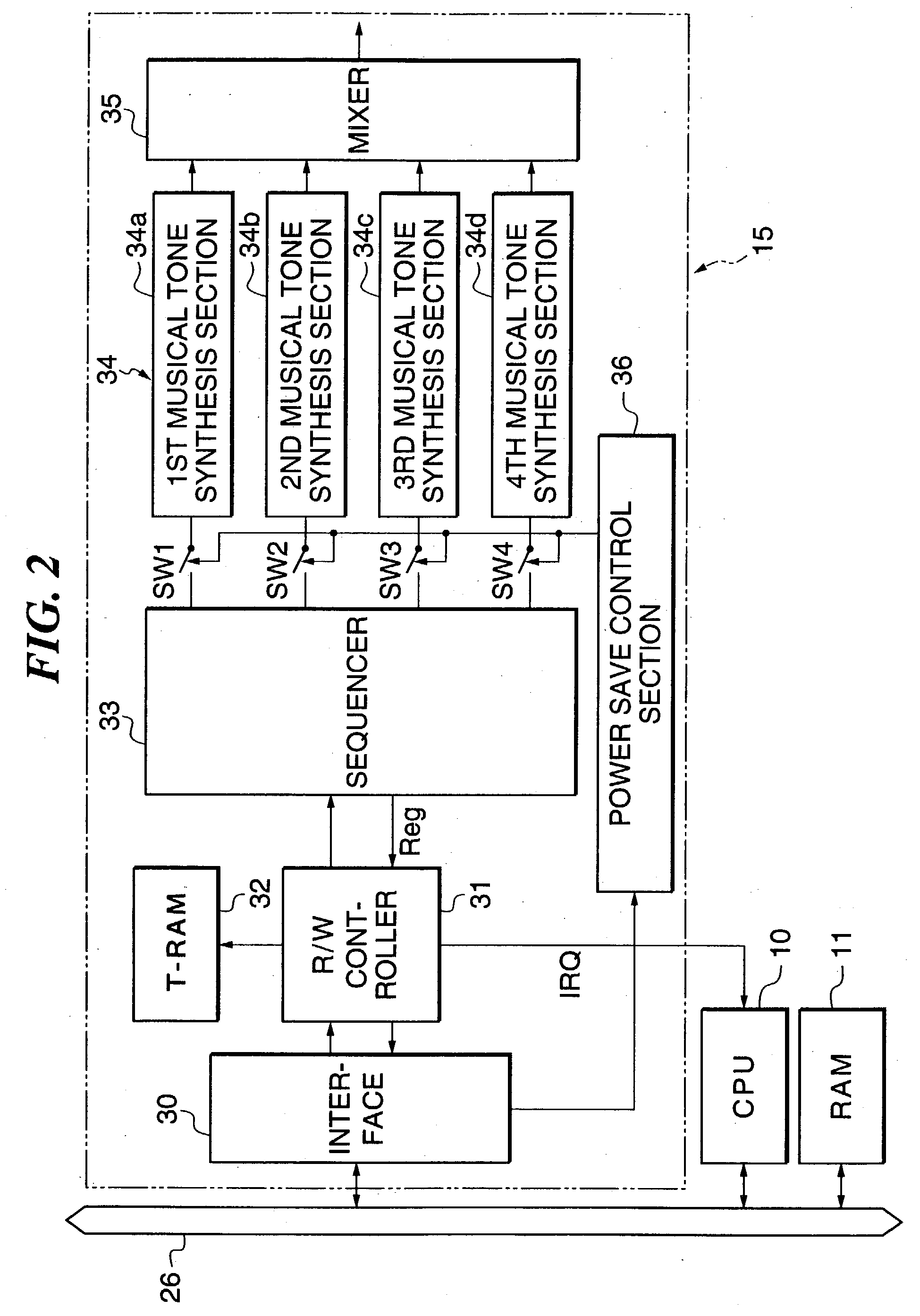Portable appliance, power saving method and sound volume compensating method, and storage medium
a technology of sound volume compensation and portable appliances, which is applied in the direction of power management, electrophonic musical instruments, instruments, etc., can solve the problems of reducing the volume level of reproduced musical tones, consuming a lot of power to shorten the battery life, and unable to increase the space occupied by the battery as a power source of the mobile phone devi
- Summary
- Abstract
- Description
- Claims
- Application Information
AI Technical Summary
Benefits of technology
Problems solved by technology
Method used
Image
Examples
first embodiment
[0050] FIG. 1 shows the whole arrangement of a cellular phone to which is applied a mobile device according to the present invention. The cellular phone shown in FIG. 1 includes an antenna 1a, which is usually configured to be retractable, and connected to a communication section 13 having a modulating / demodulating function. A system CPU (Central Processing Unit) 10 controls the operations of component parts of the cellular phone 1 by executing telephone function programs, and includes a timer for indicating a time period elapsed during operation thereof and generating a timer interrupt at predetermined time intervals. Further, the system CPU 10 carries out a power saving process and a process for aiding a musical composition-reproducing process in response to an intervention required (IRQ) signal. A system RAM (Random Access Memory) 11 is allocated to a musical composition data storage area for storing data of musical compositions each composed of a plurality of parts and downloade...
second embodiment
[0123] Next, description will be made of the reproducing operation of the FIG. 8 musical composition-reproducing section 15 of the second embodiment carried out using musical composition data in the second format shown in FIG. 4(b).
[0124] When the system CPU 10 delivers the reproduction start signal to the musical composition-reproducing section 15, this signal is input to the sequencer 33 to start the reproduction of a selected musical composition. The system CPU 10 reads out a predetermined amount of sequence data from the leading end of sequence data of musical composition data of the selected musical composition, and writes the read data into the T-RAM 32 under the control of the R / W controller 31. In this case, sequence data formed of mixed data of a plurality of parts is written into the T-RAM 32. The sequencer 33 detects a part of the read sequence data, and sets tone generation parameters based on the sequence data to one of the first to eighth musical tone synthesis section...
PUM
 Login to View More
Login to View More Abstract
Description
Claims
Application Information
 Login to View More
Login to View More - R&D
- Intellectual Property
- Life Sciences
- Materials
- Tech Scout
- Unparalleled Data Quality
- Higher Quality Content
- 60% Fewer Hallucinations
Browse by: Latest US Patents, China's latest patents, Technical Efficacy Thesaurus, Application Domain, Technology Topic, Popular Technical Reports.
© 2025 PatSnap. All rights reserved.Legal|Privacy policy|Modern Slavery Act Transparency Statement|Sitemap|About US| Contact US: help@patsnap.com



